Casebook
Enterprise Case Management Application for Child Welfare
Project Dates: 2013-present
Partners: Case Commons, Indiana Department of Child Services
My Roles: Design Lead, Product Strategy, User Research, UX Design, UI Design
Last year, the U.S. had more than 3 million children involved in a maltreatment report. Out of those children, approximately 1,500 died from abuse or neglect.
Government child welfare agencies are charged with serving and protecting these vulnerable children. Child welfare caseworkers, supervisors, and managers within these agencies often care deeply about their work, but may face great challenges themselves. They confront overwhelming caseloads, lack the information to allocate resources efficiently, and face unnecessary complexity in determining what is working and what is not. As a result, worker burnout and high turnover are ongoing issues, and children may inadvertently fall through cracks in the system, sometimes leading to tragic consequences.
One part of the problem is outdated technology. Public sector case management applications in the United States are often focused more on policy compliance than user experience. Legacy software may be slow, siloed and unintuitive, falling far short of fulfilling the needs of social workers in the field, and by extension, the children and families they serve. Caseworkers and supervisors may have to make critical, life-shaping decisions based on fragmented, inaccurate, and out-of-date information. Agency managers lack the resources to spot trends quickly, deploy services efficiently, allocate funds effectively, and improve performance across jurisdictions. Children and families suffer from deficient support.
Casebook is an award-winning web-based application for social service workers to manage child welfare work.
Funded in part by the Annie E. Casey Foundation (AECF), Casebook is built around decades of research in child welfare best practice. Our goal is to help front line workers more quickly and easily complete the extensive documentation required of them, while simultaneously providing both workers and supervisors with better tools and more timely and relevant information in order to promote objective, data-informed decisions about child safety, trauma reduction, and permanency.
Under my leadership, Casebook was awarded the 2014 UX Magazine Design for Experience Award for best Public Sector Application.
Casebook is a singular application, but it is made up of five distinctly complex modules. At any given time, we are designing new functionality or iterating on up to ten simultaneous objectives.
The application is fully responsive and Section 508 compliant, enabling busy caseworkers to enter data from the field — thereby decreasing data-entry lag time and increasing both data quality and completeness.
Log-in Page
Case Page Highlighting Individual Children
We use photos here, and throughout the application, to remind workers of the impact of their decisions on real people — as well as to help ensure that data is added to the correct person's records. Though there is a lot of system data, we curate in order to clearly present only what is actually required for each decision. On this page for example, we highlight the current status of and last contacts with individual children, making it easier to identify child-specific needs and to track the impact of case-level decisions on each child.
Genogram-Inspired Family Network Diagram
Since 2004, the Annie E. Casey Foundation has recognized strong social networks as one of three key components to families’ realization of well-being and successful outcomes. Based upon this, we built the Casebook interface around people and relationships, rather than investigations and cases, as has traditionally been the practice in child welfare systems.
Inspired by the genogram, a common tool used by social workers to visualize family dynamics, we created the Family Network diagram. This diagram appears throughout Casebook and helps caseworkers easily and quickly record a rich network of relationships for a child in care, as well as discover new sources of support for that child.
Process Example:
Iterating on Existing Functionality
One essential task in Child Welfare casework is keeping accurate track of where individual children are staying or living, both currently and over time.
This piece of information is vital both because it has ramifications for child safety, for which the state is responsible, and because the frequency and details of moves can have dramatic impacts on the child's well-being in the long-term. Whether a child has to change schools at the same time as they are removed from their parents; whether they are placed with (or separated from) siblings; and whether they are living with other family members or strangers are just a few of the factors that may affect the level of trauma experienced by an already abused or neglected child when circumstances require that they be placed into foster care.
Despite the importance of this information, Casebook screens designed prior to my arrival did an inadequate job of encouraging good data entry and, in fact, often made it difficult to see and correct when data was incomplete or inaccurate. The Case Commons Data Science Team uncovered several hundred children whose current locations were unknown, as well as a number of children with data in a totally invalid state. Furthermore, they discovered a disturbing trend: rather than "adding" new placements to a child's timeline of locations over time, many caseworkers were inadvertently editing and overwriting the child's current location repeatedly, thereby completely erasing any record of the child's history with each new move.










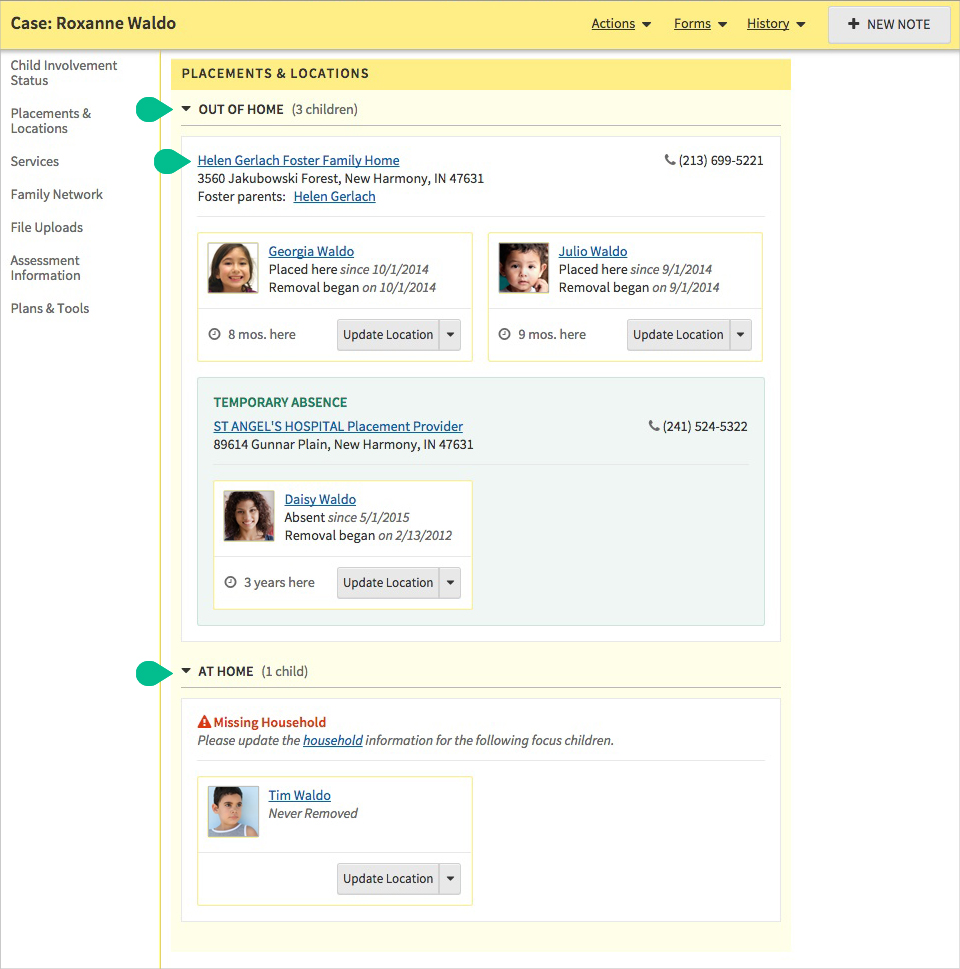
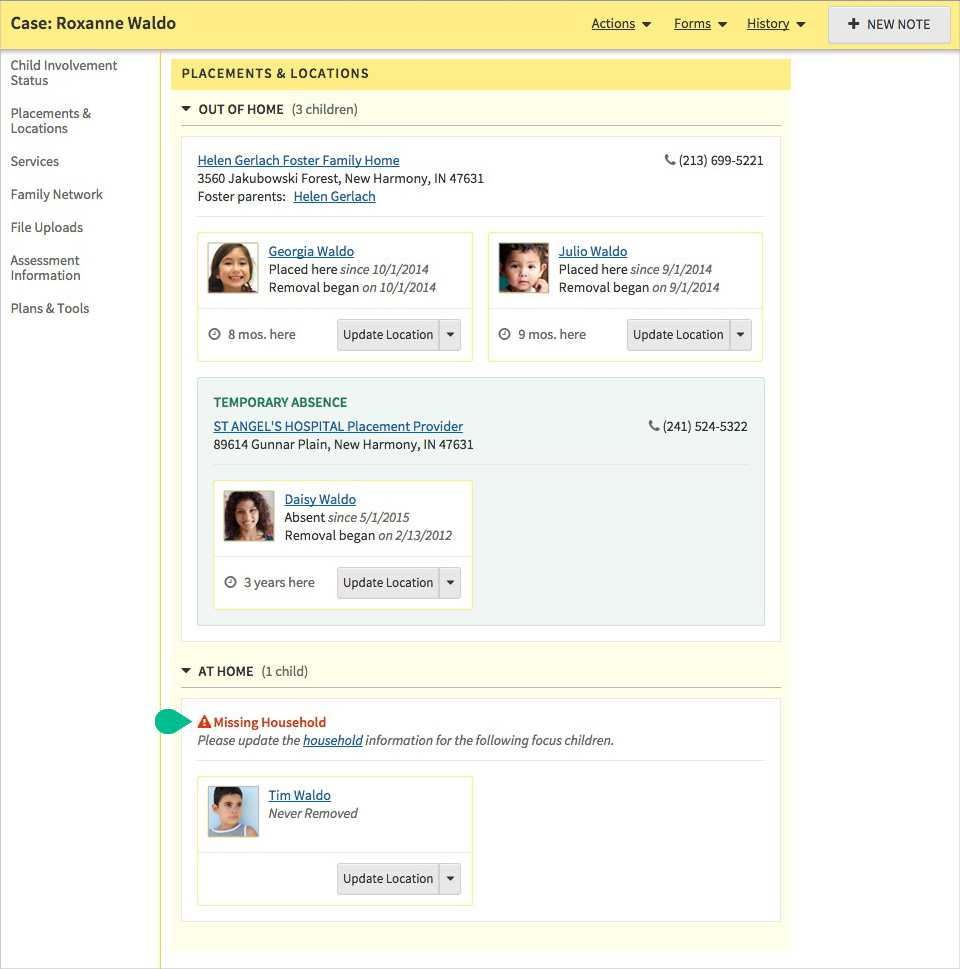

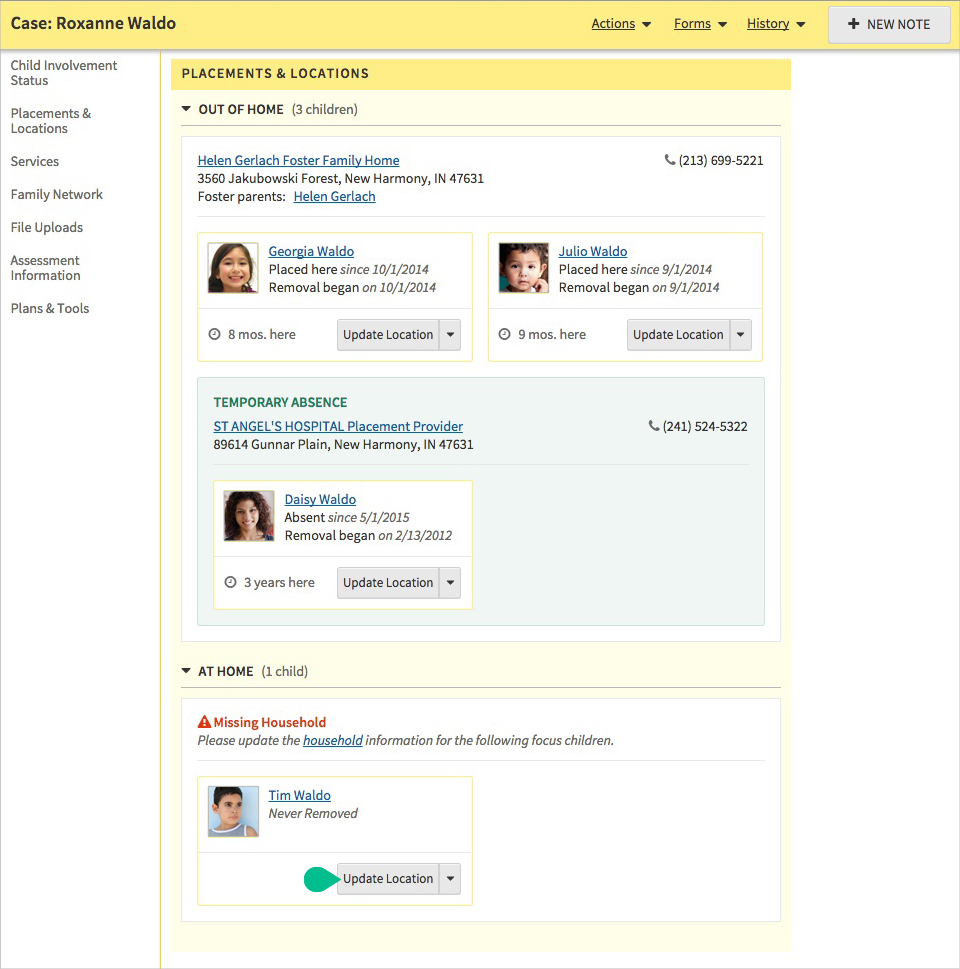
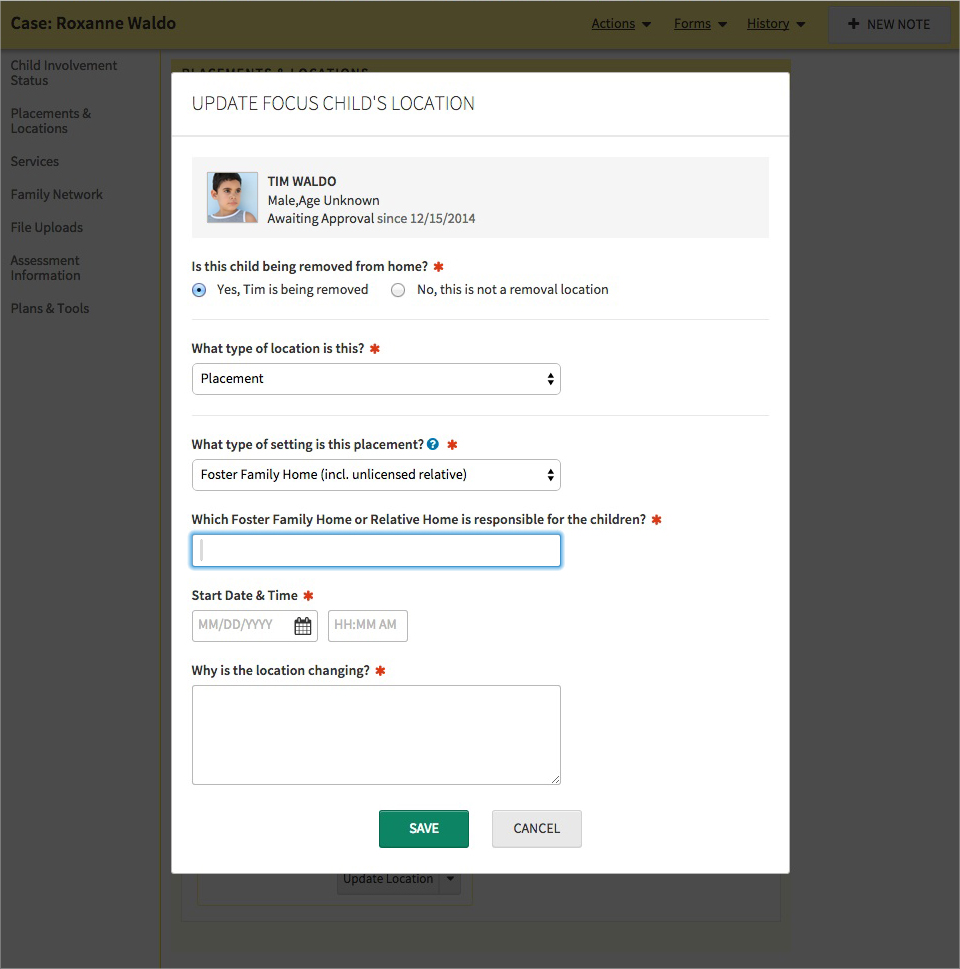
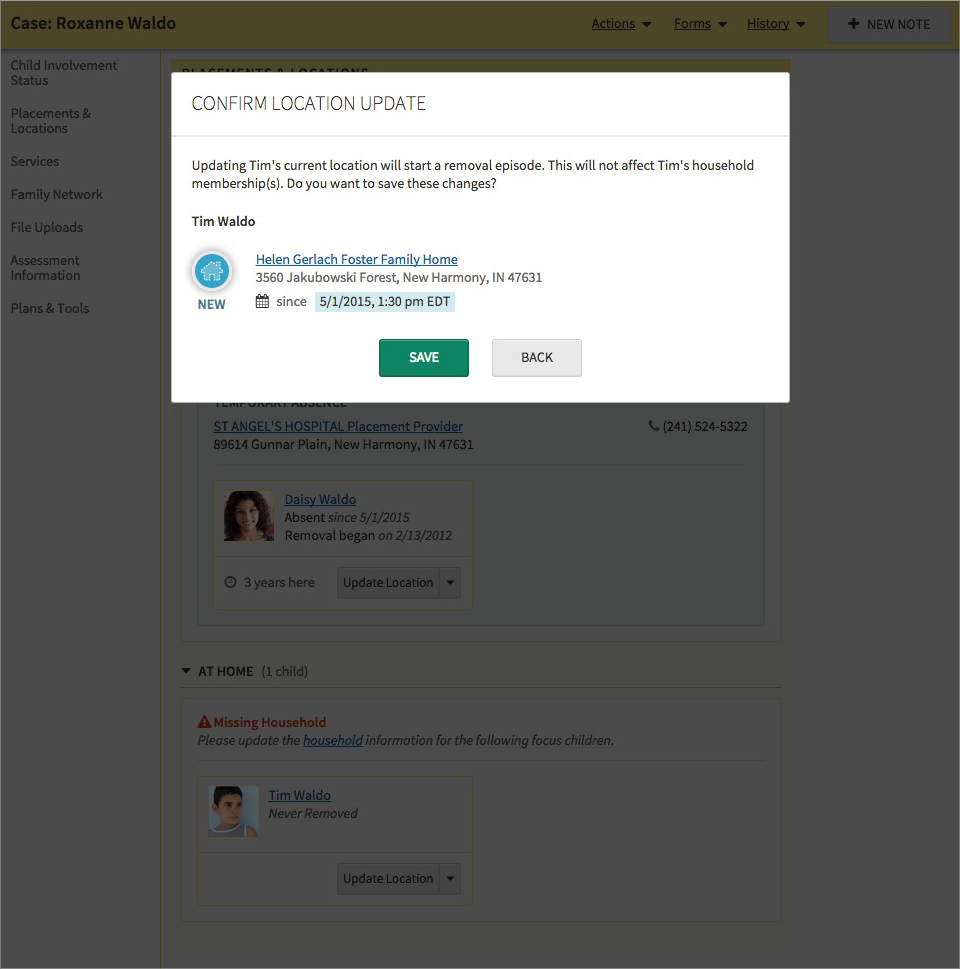
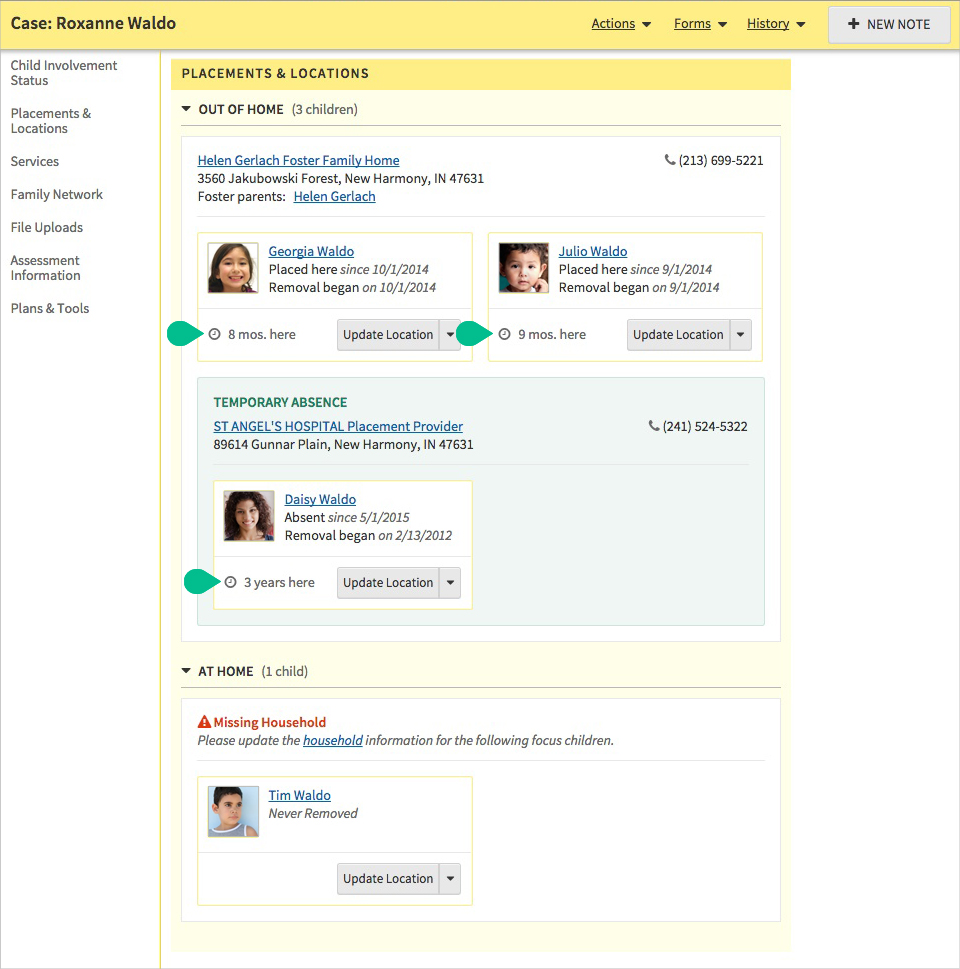
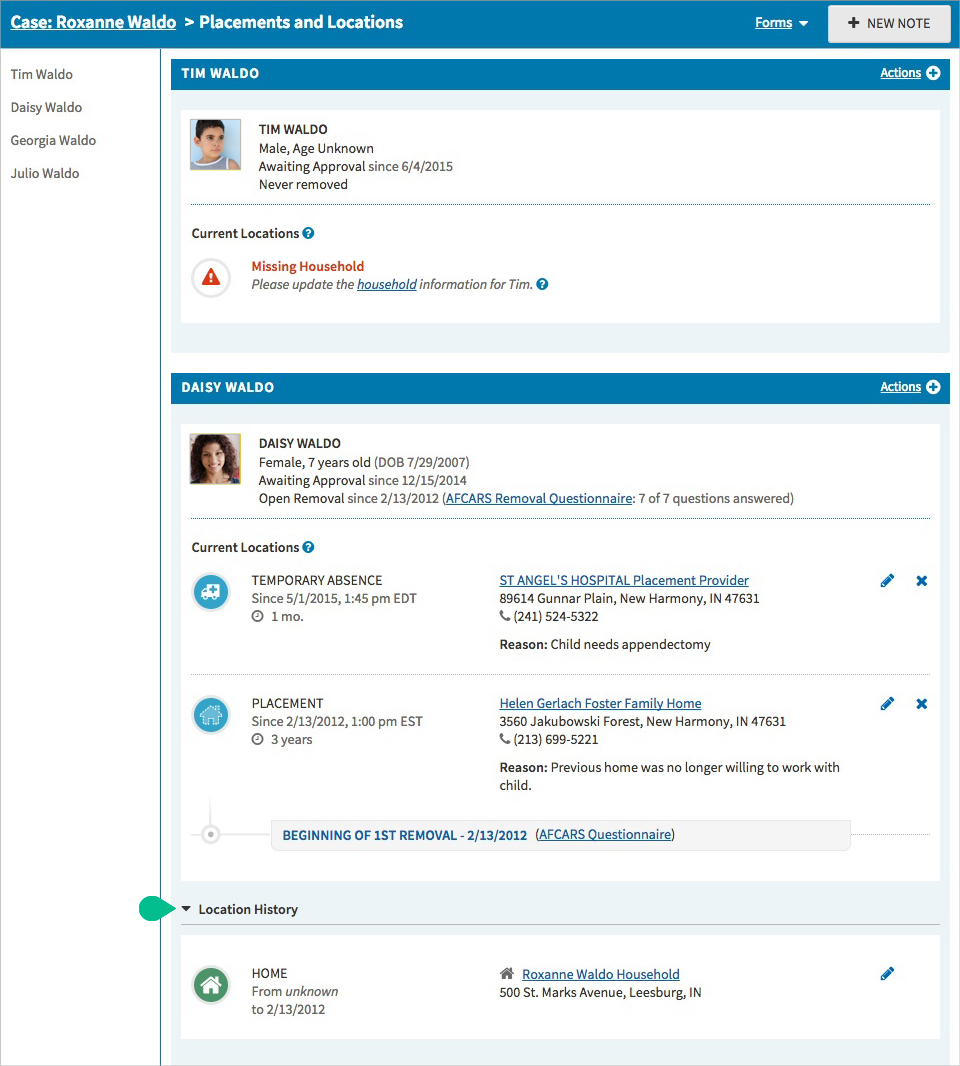
Children were not grouped in any way, making it difficult to see who was at home vs. removed from home, and which children were placed together